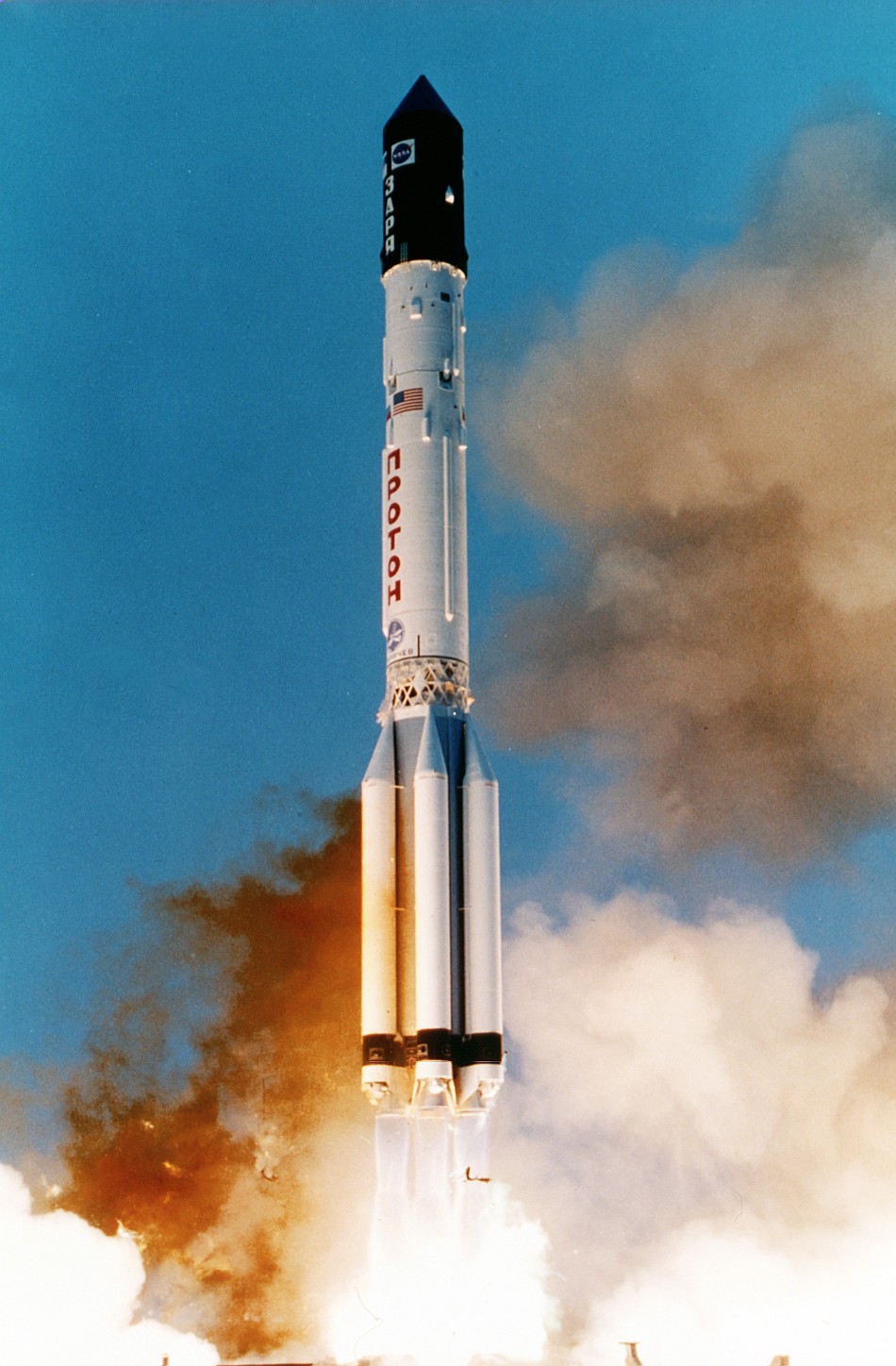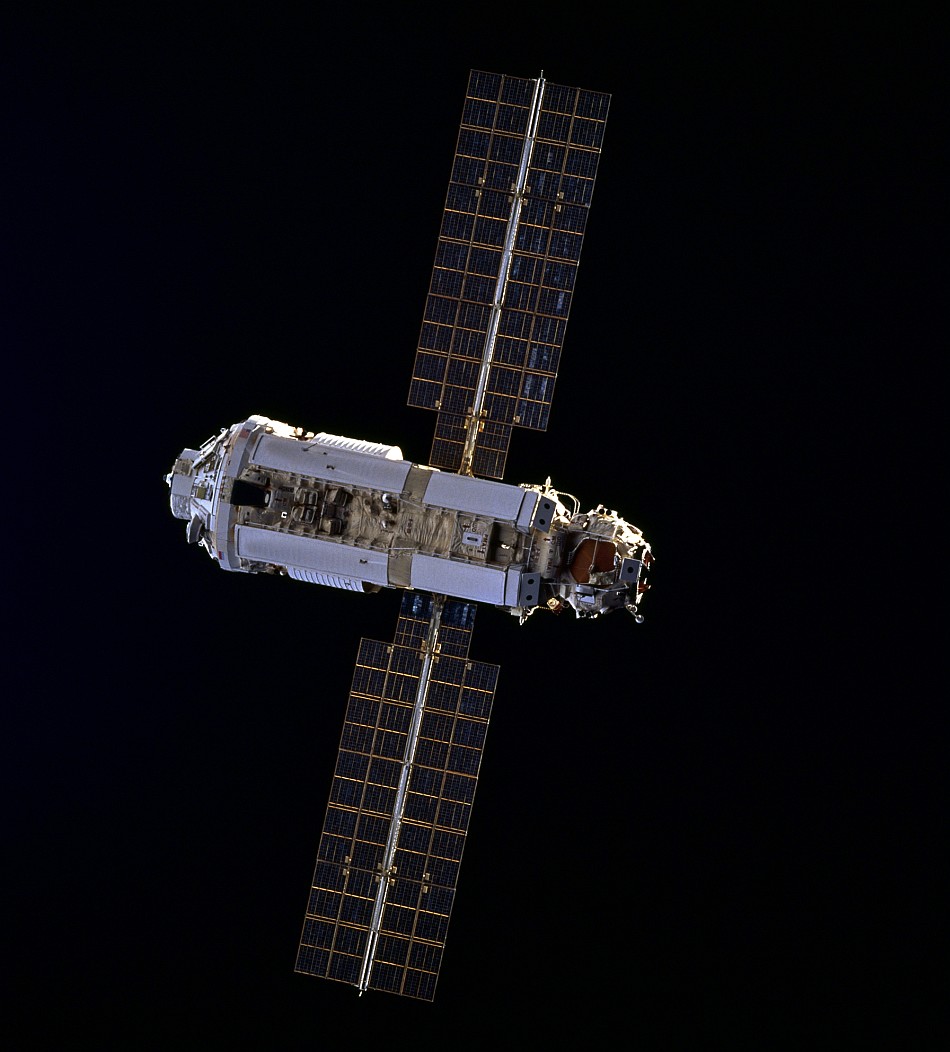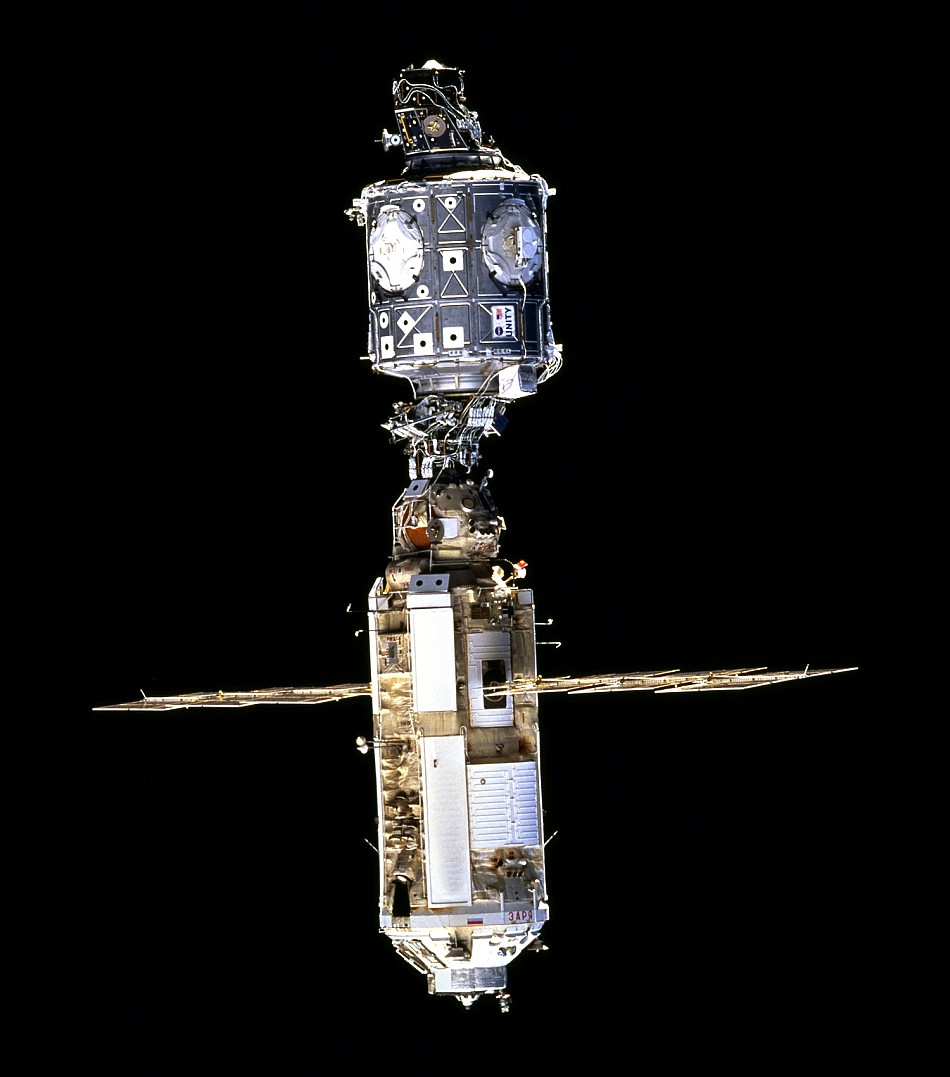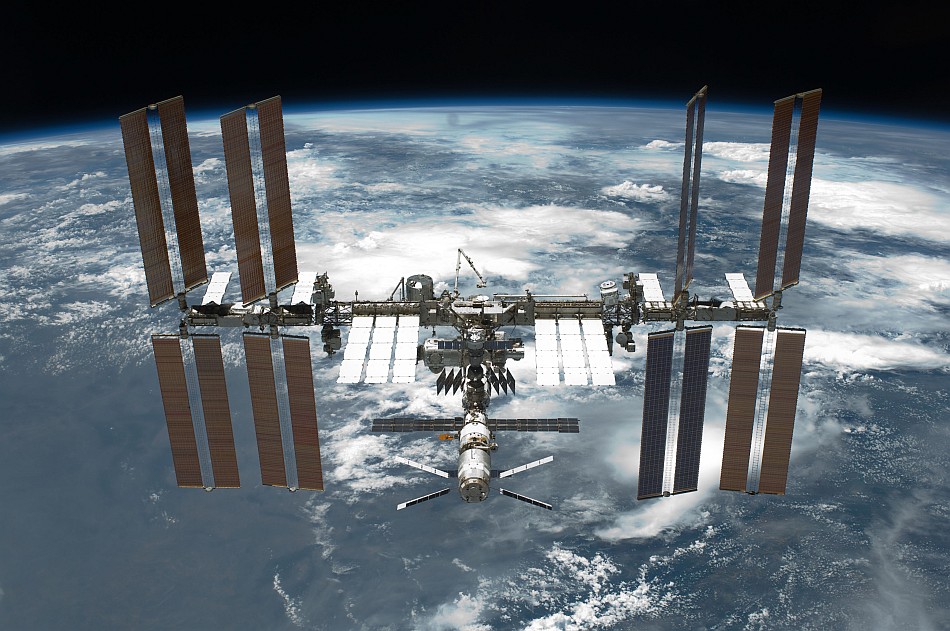Added 1 new A* page:Figure I might as well get through the last--or the first, rather--of the modules on the ISS, seeing as how I sorta mentioned them yesterday. The third module, the Zvezda, shown yesterday, attached to an earlier Russian module, the Zarya ("Dawn" in Russian), which was in turn attached to an American module, the Unity.
Zarya was the first module to launch, on November 20th, 1998, on a Proton rocket, Russia's most successful rocket line (still in use, too, but the Progress module that crashed during launch yesterday was on a Soyuz rocket--those are the ones with the easily spotted conical thrusters). Here's a nifty photo of Zarya launching in its Proton rocket from Baikonur Cosmodrome in Kazakhstan:

image by NASA (source)
The Unity launched in the cargo hold of the Space Shuttle Endeavour a couple weeks later--December 4th--and the two modules were brought together--the Zarya

image by NASA (source)
met up with the Unity, and two days later, on December 6th, was born Zaryunity (okay I made that up), aka the International Space Station:

image by NASA (source)
The Unity, as its name suggests, is a connecting module, with lots of ports for other modules to plug into; the later Italian-built modules Harmony and Tranquility, which I talked about here and here, are also connecting modules, although they're based on a different, somewhat larger design (21 feet long vs Unity's 15 feet).
With its own thrusters, solar panels, batteries, and radiators, Zarya was "designed to fly autonomously for six to eight months," but ended up having to run on its own (the connecting module Unity, not being connected to anything else, being more or less dead weight) for almost two years due to delays in getting the next module, the Zvezda, ready--the Zvezda wasn't launched until July 12th, 2000, and was finally connected to the Zarya two weeks later, on July 26th, by a Space Shuttle crew. Now that Zarya is permanently attached to Zvezda, it can't use its main thrusters, so it stores fuel for the Zvezda, and in fact is mostly used for storage.
There are even more modules on the ISS, but, eh, well maybe I will talk about them some day, who knows--or you could just check out the list of them here. For now I'll settle for a nice photo of the station as it pretty much looks now, although this photo, from May 30th of this year, also includes the ATV Johannes Kepler, with its X-wing solar panel array, at the bottom (the Kepler was filled with trash and de-orbited to burn up in the atmosphere in June):

image by NASA (source)
Only one more major component is planned: the Russian science module Nauka ("Science" in Russian) is due to launch in May 2012, and it will replace the Russian docking compartment, Pirs ("Pier" in Russian), which hasn't been all that useful since the main module it was going to connect to was cancelled; once the Nauka shows up, the Pirs will be the first ISS module to be decommissioned--ie, disconnected and burned up in atmospheric re-entry; I suppose, to add insult to injury, they will probably fill it with trash first.
The life of a space module is a hard one!
|
